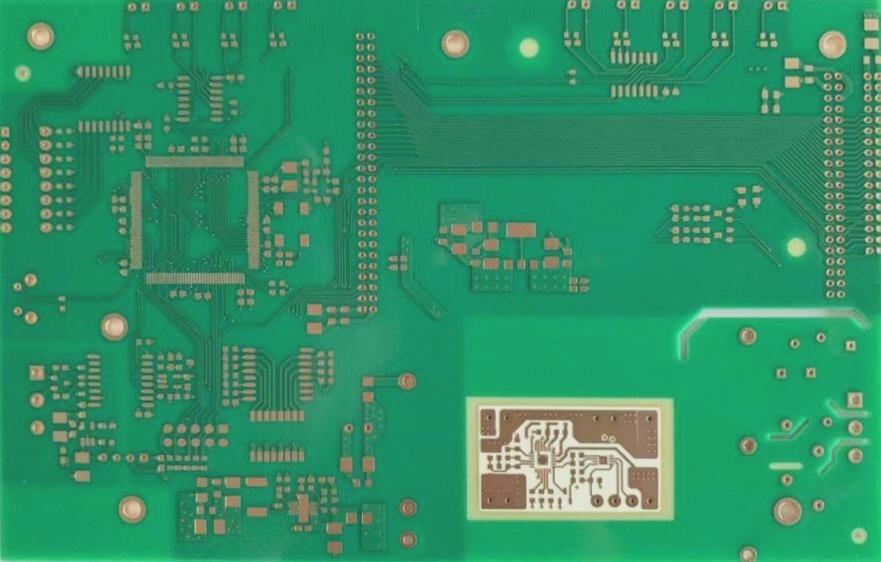433MHz/315MHz remote controls are ubiquitous, used for controlling devices such as turning lights or TVs ON/OFF, or in applications like opening/closing parking gates or villa entrances, among others. These remotes come in various shapes and sizes, but most typically feature four buttons. In this article/video, I introduce a versatile four-channel wireless switch that can be paired with most 433MHz or 315MHz remotes available on the market. The device can store up to 80 remote control buttons/codes (equivalent to 20 remotes with four buttons) in its EEPROM memory. You can easily record, delete, decode, and assign any individual remote control button.
The board is compact and comes equipped with a small 2×8 character LCD, enhancing the user experience. Any remote control button can be assigned to any of the four relays to control devices. The heart of the circuit is the ATMega8 microcontroller, and the code was developed using the Arduino IDE. The most challenging aspect of this project was working with the EEPROM memory, which I resolved by using structures. Powering the board is straightforward—just connect a 9V-1A power adapter.
For the schematic and PCB design, I used Altium Designer 23 and shared the project with my friends for feedback and modifications via Altium-365’s secure cloud platform. The Octopart search engine was invaluable for quickly finding component information and generating the Bill of Materials (BOM). To ensure high-quality fabrication, I sent the Gerber files to Wellcircuits. I am confident this circuit will meet your needs for a compact switcher board.
Download the Gerber files or order 10 high-quality boards for just $5 USD
If you prefer to order a fully assembled PCB board (including Free Shipping), click here
Specifications
Input Power: 9V-1A (DC)
Control Range: 30-60m (varies depending on conditions)
Number of Relays: 4
Features: Record/Delete/Decode/Assign
Maximum Current Consumption: 400mA (when all relays are ON)
Operating Frequency: 315MHz or 433MHz
Circuit Analysis
Figure 1 shows the schematic diagram of the 433MHz 4-Channel Wireless Switcher. As shown, the controller is an ATMega8-16PU chip [1].

Figure 1
Schematic diagram of the 433MHz 4-Channel Wireless Switcher
A. Power Supply
Two separate voltage regulators are used to power the relays and the MCU. REG2, an SMD L7805 regulator [2], powers the relays, while REG1, a 78L05 SOT-89 SMD regulator [3], powers the MCU and LCD. CON1 connects the 9V-1A power adapter to the board. FB1 [4], C9, and C10 help reduce input noise. R7, C6, and C7 form a low-pass filter to further minimize noise for REG1. C8, C11, and C12 stabilize the output voltage from the regulators.
B. Microcontroller
The MCU used in this project is the ATMega8 (U1). Y1 is a 16MHz crystal oscillator [5], providing the clock source for the microcontroller. C4 and C5 are decoupling capacitors, and R6 is a pull-up resistor that prevents unwanted triggering of the RESET pin. ISP is used to connect an AVR ISP programmer to the board for flashing the MCU.
C. ASK Receiver Module
To receive signals from the remote control transmitter, an RF receiver module is required. Depending on the frequency of your remotes, you will need either a 315MHz or a 433MHz receiver module. There are various modules available, differing in quality and size. The module I selected is the RXB45, which is affordable and easy to find. Occasionally, the module may receive random codes, but since the switcher only responds to recorded codes, this should not pose a problem. However, if desired, you could opt for a higher-quality module. Figure 2 shows an image of the RXB45 receiver module.

Figure 2
Image of the RXB45 433MHz receiver module
D. LCD
The LCD used in this project is a 2×8 character display with a green backlight. Since the D0-D4 pins of the LCD are not used (4-bit mode), I added pull-down resistors (R1 to R4) to avoid potential instability. Figure 3 shows an image of the LCD used in this project.

Figure 3
8×2 Character LCD
E. Relays
The switcher features four relays, and all relay drivers are identical. Let’s take a closer look at one relay driver. K1 is an LM1-5D relay [6]. To protect the MOSFET and the circuit from reverse currents generated by the relay, I used a 1N4007 diode (D2) [7]. C13 helps dampen relay noise. Q1 is a Si2302 MOSFET [8] used for driving the relay. A pull-down resistor, R8, ensures that the gate pin of Q1 is not triggered unintentionally.
F. Push Buttons
SW1 and SW2 are tactile push buttons used to record or delete remote control buttons. R12 and R13 are pull-up resistors, and C17 and C18 are used to debounce the push buttons.
PCB Layout
Figure 4 shows the PCB layout for the device. It is a double-layer PCB, and I used a mix of SMD and through-hole components in the design. Figure 5 presents the assembly drawings.

Figure 4
PCB layout of the 433MHz 4-Channel Wireless Switcher Board

Figure 5
Assembly drawings for the 433MHz 4-Channel Wireless Switcher Board




